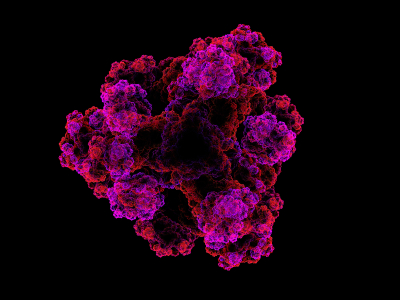 The ability to manipulate genes and proteins and observe the effects of specific changes is a foundational aspect of molecular biology. From the first site-directed mutagenesis systems to the development of knockout mice and RNA interference, technologies for making targeted changes to specific proteins to eliminate their expression or alter their function have made tremendous contributions to scientific discovery.
The ability to manipulate genes and proteins and observe the effects of specific changes is a foundational aspect of molecular biology. From the first site-directed mutagenesis systems to the development of knockout mice and RNA interference, technologies for making targeted changes to specific proteins to eliminate their expression or alter their function have made tremendous contributions to scientific discovery.
A recent paper highlights a novel application of HaloTag technology to enable the targeted destruction of specific HaloTag fusion proteins in vivo. The paper, published online in the July issue of Nature Chemical Biology, details a promising new method with application for validation of potential drug targets by specific in vivo inhibition, and for studying the function of specific genes in organogenesis or disease development.
The method takes advantage of inherent cellular protein control mechanisms to target and destroy hydrophobically tagged HaloTag fusion proteins. Hydrophobic domains within a protein are normally enclosed within the folded protein and not exposed on the surface. Surface-exposure of hydrophobic domains is an indicator of improper folding, and such unfolded proteins are eliminated by the proteasome. The authors of this paper took advantage of the HaloTag protein ligand-binding domain to attach a small hydrophobic molecule, mimicking an unfolded state and thus inducing degradation.
They were able to demonstrate targeted destruction of several transmembrane proteins in HEK293 cells and destruction of the transcriptional modulator Smad5 in Zebrafish embryos. They were also able to target a HaloTag-oncogene fusion protein (HRAS1G12V) in cell culture and to show that tumors generated by cells containing HaloTag-HRAS1G12V fusions in a nude mouse model decreased in size upon exposure to the small hydrophilic molecule.
The advantages of the HaloTag protein for this type of application include the fact that it is a bacterial dehalogenase protein, completely non-native to mammalian cells and therefore less likely to cause cross-reactivity issues. The protein also forms covalent bonds with ligands containing a specific haloalkane-reactive linker, allowing easy labeling (or targeting) of HaloTag fusion proteins with a number of different types of molecule. In the paper above, the authors engineered a small hydrophobic molecule for this purpose.
There are numerous methods for identifying potential drug targets, including microarray analysis and RNA interference screens, however validation of these targets by inhibition in vivo can be challenging. The Neklesa paper provides a promising alternative that could provide an elegant method for specific knockout of HaloTag fusions in research studies. I spend a fair amount of time scanning the literature and the science news for interesting topics to include in blogs. Personally, I think this is an exciting paper, the fact that it makes use of a Promega technology is nice, but I think the research is “blogworthy” in it’s own right.
Here’s the paper so that you can judge for yourself.
![]() Neklesa TK, Tae HS, Schneekloth AR, Stulberg MJ, Corson TW, Sundberg TB, Raina K, Holley SA, & Crews CM (2011). Small-molecule hydrophobic tagging-induced degradation of HaloTag fusion proteins. Nature chemical biology, 7 (8), 538-43 PMID: 21725302
Neklesa TK, Tae HS, Schneekloth AR, Stulberg MJ, Corson TW, Sundberg TB, Raina K, Holley SA, & Crews CM (2011). Small-molecule hydrophobic tagging-induced degradation of HaloTag fusion proteins. Nature chemical biology, 7 (8), 538-43 PMID: 21725302
Isobel Maciver
Latest posts by Isobel Maciver (see all)
- 3D Cell Culture Models: Challenges for Cell-Based Assays - August 12, 2021
- Measuring Changing Metabolism in Cancer Cells - May 4, 2021
- A Quick Method for A Tailing PCR Products - July 8, 2019
